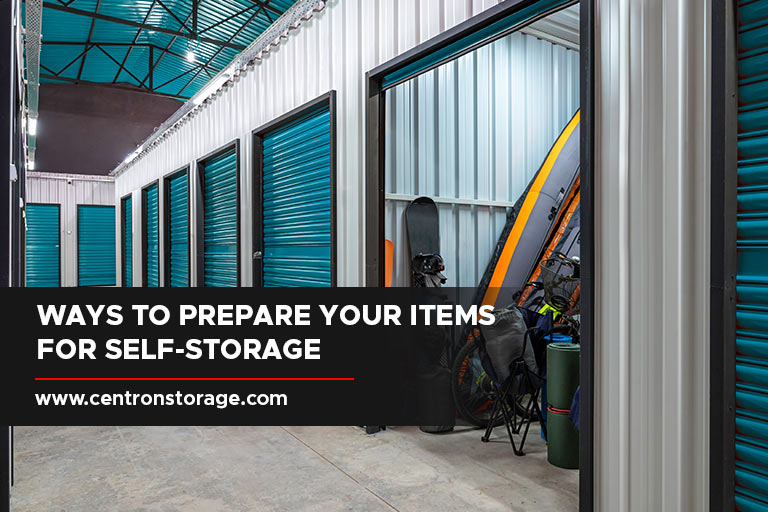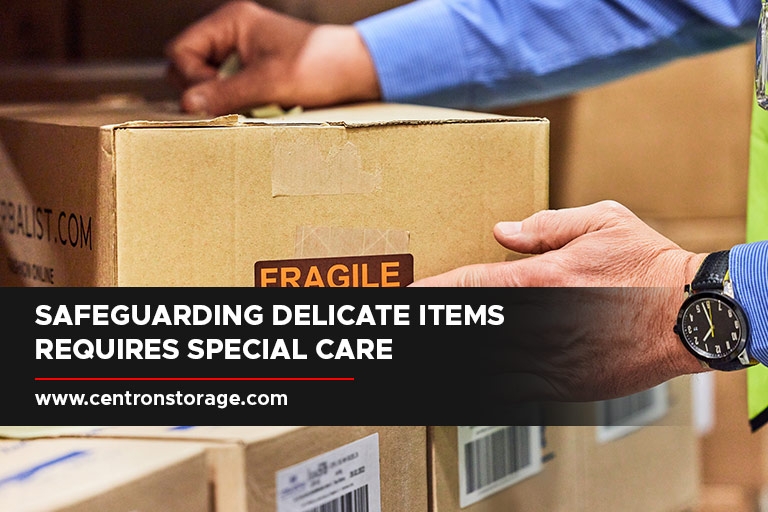Ways to Prepare Your Items for Self-Storage

Storage solutions are an extremely convenient way of storing your belongings, no matter if you’re downsizing, relocating, or needing extra space. When preparing your items for storage, careful planning and proper packing techniques will go a long way to ensuring that your possessions get to their destination intact.
Here’s a quick and easy guide to make your storage experience as smooth and worry-free as possible.
How to Prepare Furniture for Storage
Preparing furniture for storage involves several crucial steps:
- Clean and Dust
Before storing your furniture, get to cleaning and dusting each piece thoroughly. Remove dirt, dust, stains, and spills with a soft cloth and a light cleaning solution. Delicate surfaces like wood or leather have their own special cleaning requirements. Find out what cleaning products to use and how to clean them.
- Disassemble if Possible
If your furniture is bulky or can be easily disassembled, consider taking it apart before storing it. This will save space and reduce the risk of damage during transportation and storage.
- Protect Your Furniture
Avoid scratches, dents, and other damage; wrap your furniture in protective materials. Use blankets, bubble wrap, or covers. Give extra care to fragile parts like glass tabletops or intricate decorations.
- Use Proper Storage Techniques
When placing furniture in a storage unit, ensure it is positioned to maximize space and minimize the risk of damage. Avoid stacking heavy items on top of delicate ones and provide adequate support for larger pieces.
How to Prepare Appliances for Storage
By preparing your appliances for storage properly, you can prevent damage and keep them pristine. Here’s what to do:
- Clean Appliances and Empty Containers
Before storing any appliances, make sure they are thoroughly cleaned. Remove all food residues, empty water reservoirs, and detach any detachable parts for separate cleaning.
- Defrost Freezers and Refrigerators
Clean and defrost your freezers and refrigerators; follow the manufacturer’s instructions to keep from damaging them. Leave them unplugged and open the doors so as not to encourage odour build-up and mould growth.
- Secure Loose Parts
Keep loose parts, such as shelves or detachable doors, secured or taped. Transporting or storing them unsecured may damage them or other items.
- Use Covers as Protection
Use appliance covers or moving blankets to shield your appliances from dust and scratches during transport and storage. The extra layer of protection will help maintain their appearance and functionality.
How to Prepare Electronics for Storage
Electronics contain valuable and sensitive data; they require special care when transported or stored. To prepare electronics for storage, here’s what you have to do:
- Backup Data
Don’t lose any important files; back up your data using external hard drives, cloud storage, or other backup solutions.
- Remove Batteries
Remove the batteries of all applicable devices. When stored for too long, the battery may leak, corrode, and damage your electronics.
- Secure Cables and Accessories
Cable ties are a godsend when it comes to organizing and securing cables and other electronic accessories. Use them to your full advantage to keep your items from getting tangled and damaged.
- Use Anti-Static Materials
Anti-static packaging materials, like foam or bubble wrap, are a must if you want to prevent electrostatic discharge. This will prevent damage to sensitive internal components.
How to Prepare Clothing for Storage

Preparing your clothing for storage is as easy as following these tips:
- Clean and Launder
Clean all clothing items before storing them to avoid stains and odours. Wash and dry clean each item according to the care instructions.
- Fold or Hang
Decide whether to fold or hang your clothing items based on their fabric type and the available space. Use high-quality hangers for delicate fabrics to avoid stretching or misshaping.
- Choose Appropriate Boxes
Select suitable clothing storage boxes or plastic bins with airtight seals or vacuum-sealed bags. These storage materials protect your clothes from moisture and dust.
How to Prepare a Mattress for Storage
Preparing your mattress for storage is crucial to maintain its hygiene and prolong its lifespan. Follow these steps:
- Clean and Vacuum
Clean your mattress by vacuuming both sides to remove dirt or debris. Treat any stains with appropriate stain removers or mild cleaning solutions.
- Protect with Covers
Invest in a mattress cover or bag specifically designed for storage. These protective covers will shield your mattress from dust, moisture, and potential damage during transportation and storage.
- Store in a Dry Area
Choose a dry storage area with proper ventilation to prevent mould or mildew growth. Avoid storing mattresses directly on the floor, as it can increase the risk of moisture absorption.
- Avoid Heavy Weight on Top
Do not place heavy items on your mattress during storage, which can cause sagging or misshaping. Store it in an upright position or on its side to minimize pressure.
How to Prepare Books for Storage
Books are treasures that deserve proper care when being stored. Follow these steps to ensure their preservation:
- Clean and Dust
Dust each book carefully using a soft cloth or a soft-bristled brush. Pay attention to the corners and edges where dust tends to accumulate. Avoid using water or cleaning solutions directly on the books.
- Pack in Sturdy Boxes
Choose sturdy, acid-free boxes for storing your books. Acidic materials can cause discolouration and deteriorate with time. Line the boxes with clean paper or acid-free tissue to provide additional protection.
- Store Upright or Flat
When placing books in storage, store them upright or flat to prevent warping or spine damage. Avoid stacking too many books on each other to avoid excessive pressure.
- Maintain Moderate Temperature and Humidity
Books are sensitive to extreme temperature and humidity fluctuations. Optimal storage conditions include moderate temperatures (around 60-75°F or 15-24°C) and humidity levels between 30% and 50%.
How to Prepare Fragile Items for Storage

Fragile items require extra care to ensure their safekeeping during storage. Follow these guidelines:
- Wrap Individually
Wrap each delicate or fragile item in bubble wrap or packing paper separately. This will protect against impact and prevent items from scratching or breaking each other.
- Use Proper Cushioning
Place cushioning materials such as packing peanuts or foam inserts in the storage box to absorb shocks and minimize movement. Fill any empty spaces to ensure a snug fit.
- Label and Handle With Care
Clearly label the boxes containing fragile items as “Fragile” or “Handle with Care.” This will alert anyone handling the boxes to exercise caution and avoid mishandling.
- Store in a Secure Location
Store fragile items in a secure location within the storage unit, away from heavier or bulkier items. Opt for shelving or sturdy boxes that provide added protection and stability.
On the lookout for one of the most reliable and secure storage facilities in North York? Centron Storage provides top-notch storage solutions for all your needs. Visit our website at Centron Storage to learn more or call us at (416) 739-0000 to reserve your storage units in North York today!
